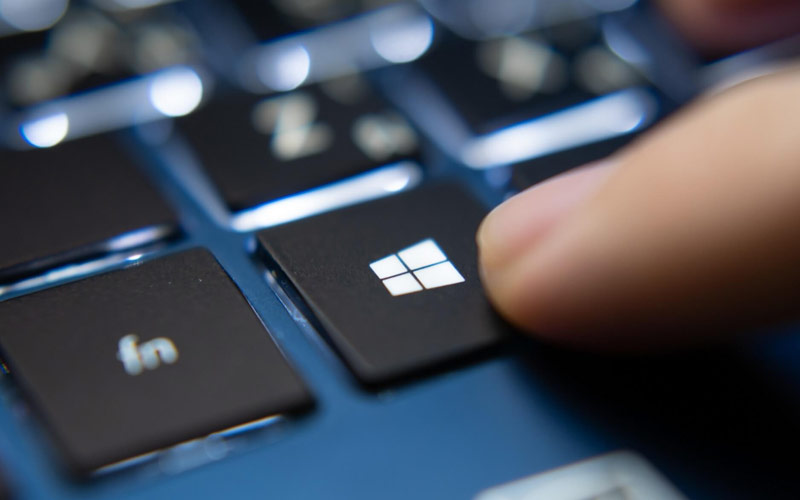Table of Contents
It might be frustrating to see, yellow exclamation point icon over your network connection icon in Windows. But the OS offers to troubleshoot it for you. But whenever you run through the automatic tool, you see this message:- “Windows could not automatically detect network proxy settings errors“.
The biggest question arises, how do you fix it? Windows’ proxy settings and the steps to repair this can be happy to fix it. But before moving forward to find the answer to these questions, you have to understand the definition of a proxy server.
What is a Proxy Server?
While fixing this issue, we do not want to bore you with the details. But we want to provide some brief explanation of what a proxy is. And show you why Windows can run into problems with it. It acts as a middleman between the internet and the computer. It helps you to connect to the server directly, which gathers information for you, through the internet.
These are used in school and business, where they use them for security and efficiency. You have to set up one proxy server, to use it as your home network. So because of that, you should clear any proxy settings that might exist when you run into this issue.
How to fix proxy settings error
We are going to share some tips to fix the error on your PC. So please keep your eyes on all the steps.
1. Rebooting your computer and router
There is always a better option to reboot your computer first before you launch into advanced troubleshooting. Doing so can clear up your issue in a few moments. You can try restarting your router, whenever you run into network problems of any kind. And it’s still worth trying. Continue with more detailed steps if rebooting your computer and router has not solved your problem.
2. Check the proxy settings in windows
First of all check the issues related to your Windows proxy settings, because that is a problem. To access proxy settings in Windows 10 follow these steps:

Step1:- Firstly visit settings. In settings, select network settings.
Step-2:- And then you will see a list of options related to proxy servers. As most home users do not use a proxy, make sure that your proxy server slider is off.
Step-3:- Users such as in a work or education environment do not connect with a proxy. Now make sure to have correct proxy details.
Step-4:- After doing so, try reconnecting to the web again. If you are still suffering from proxy error, try turning off Automatically detect settings in the proxy options. And then try once again.
3. Choose The Network Adapter Troubleshooter
Whenever you click the network connection icon and choose to troubleshoot, it runs the Internet Connections troubleshooter. And the result to Windows could not detect proxy settings error. But you can run another network troubleshooter to get more help.
Click on Settings and visit Update & Security and then Troubleshoot. Then find Network Adapter in the list and walk through the troubleshooter. This tool does not always work if you are a seasoned Windows user, but still, it is worth trying.
4. Auto-Obtain IP Address And DNS
There are not many steps for troubleshooting specific to proxy servers. However, the troubleshooting error is similar to the no internet access windows error. So we are going to show some steps to solve this problem.

Step1:- Meanwhile, they both not connect to your proxy settings. But this error can be caused due to a misconfigured IP address or DNS settings. To see that error, open Settings > Network & Internet > Status. To see all your network connections click on the Change adapter options button on the list. And then click twice on the one you are using.
Step-2:- Then click the Properties button and click twice on Internet Protocol Version 4 on the list. Make sure to automatically select both the DNS server address and IP address. Misconfigured settings will prevent you from online.
5. Update Your Network Driver
You can lead to a connection error if you are using an outdated network connection. Install botched to update the network driver. In both, cases replacing it might clear up the error.

Step1:- To open this utility right-click on the Start Button and choose Device Manager. Expand the Network adapters section and then click twice on the connection you use.
Step-2:- You can also return to the previous driver by clicking on the Driver tab. Then to uninstall the latest update, you can select roll back driver. If you are experiencing this issue after updating, you can use this trick.
Step-3:- You can also check for new updates over the internet by choosing Update Driver. It would not help you find it, so download the latest driver from your machine manufacturer manually.
6. Reset Network Configuration via the command prompt
Through the Command Prompt, you can get many troubleshooting tools. Few quick commands can clear your error in moments. If you are still suffering from any trouble, right-click the Start Button again and open a Command Prompt as Administrator.
Then at a time, run the following commands, that will help you to reset your various network functions.
- netsh Winsock reset
- netsh int IP reset
- ipconfig /release
- ipconfig /renew
7. Recheck Firewall, VPN, And Antivirus Software
Make sure to check whether your network connection does not have a firewall, VPN, or security suite. Or you are not aware of any settings change done by your software update or any new app installed.

Disable your firewall, VPN and antivirus software and see your error goes or not. If the error goes then the issue lies with one of those apps. Then check them to avoid interfering with regular network activity.
8. Scan For Malware
Some malware can prevent you from getting online because they are known to mess with proxy settings if your window does not detect this web proxy setting. Message every time you reboot, you may be suffering this error then.
Then you should scan your device with a trusted anti-malware app. This app can find and get rid of any viruses or other malware running on your system. If the scan finds any error, take recommended actions and then see whether your connection works.
9. Use A Restore Point
Use a feature in your windows called the system restore. That feature helps you return to a previous point when your computer was working. You should try this solution to see if you can go back in time if your issue started recently.

Now search for the control panel in the start menu to open your restore point. If in the top right category is selected, switch to Small or Large icons and choose the System entry.
Then click on the left sidebar click System protection. To open a new window, click System Restore in the resulting dialogue box. Then you can choose through a restore point and confirm the operation. If your computer does not have any restore point, you can not use this feature.
Keep in mind that using a restore point will remove any programs and drivers. The programs and drivers installed since making that restore point would remove. On a restore point, click on the scan for an affected program to see the effect. And your personal information will not be affected by a System Restore.
10. Full Reset Your Network Settings
After trying everything given above, you should go for, full reset your network settings. You have already spent a lot of time working on this. And a full reset can be a better option for your connection problem. Thankfully, It is easy to reset your whole configuration in Windows 10. Firstly open Settings and then click on Network & Internet. At the bottom of the status bar, click on the network reset.

Be aware that all network information from your computer gets removed. So make sure to reconnect to saved networks again. If you have done this, click Reset now. Then your computer will perform the reset, then restart.
How to fix proxy settings error on windows 10
We are going to cover all the problems in windows 10 related to the proxy settings. Below are some issues that we are covering in this article.
- You can not detect proxy settings on Windows 10.
- You could not automatically determine proxy server on Windows
- Sometimes, Windows can give you a message saying that Windows can not determine the proxy server.
- Proxy settings do not save on Windows.
- Constantly, changing in Proxy Settings on Windows.
- The problem is saving and changing proxy settings on Windows.
According to users, they face internet problems on their computers. For example- very-slow internet and difficulty accessing video streaming sites such as Youtube, Vimeo and Netflix. So this can be a big problem and cause many inconveniences. Below we are going to show some best tips to overcome this problem.
1. See Your Proxy Server Settings
Step1:- Make sure to turn off the proxy server on Internet Explorer.
Step2:- Then press (Windows Key + R) on the keyboard.
Step3:- After appearing the run dialogue type inetcpl.cpl and hit Enter.

Step4:- Now click LAN settings on the connection tab.

Step-5:- Then check your proxy settings if it’s ok or not.

2. Reset IP/TCP
Step1:- From the menu press on (Windows Key + X) and then select Command Prompt (Admin).

Step2:- After starting of Command Prompt, type netsh int ip reset resetlog.txt.

Step3:- Then reboot your computer and see whether the issue is solved or not.
3. Stop Using Antivirus Software
It is not a good idea of using your computer without an antivirus but fortunately for you. Because your Windows protects by Windows Defender that is available on Windows 10.
It seems that antivirus can cause some issues in the proxy server. So it’s good advice to uninstall your antivirus software.
4. Use a restore point
Step1:- Press (Windows Key + S) and then enter system restore. Now a list will appear. In the list, select Create a restore point.

Step2:- Then Click on the System Restore button.

Step3:- Then click on next.

Step4:- Then make sure to check show additional restore points option. Then select the desired restore point and click on Next.

After doing that everything will start working again, and your issue would be solved.
5. Make Sure To Do an SFC Scan
Step1:- Open Command Prompt.
Step2:- Then enter SFC /scannow.
Step3:- Don’t worry because scanning can take 10-15 minutes.
6. Reset Your Internet Settings
Step1:- From the menu, choose Internet Options.

Step2:- Go to the Advanced tab and click on reset.

Step3:- Click on the reset button and then click on the Restore advanced settings.

Step4:- Then make sure to save your changes.

7. Restart Your Network Adapter
Step1:- Firstly choose Open Network and Sharing Center and then from the left click on Change Adapter Settings.


Step2:- Then disable it.

Step3:- Then again choose Enable from the menu.
8. Enable Obtain DNS server address automatically
Step1:- Firstly go to Change adapter settings.
Step2:- Then choose Properties.

Step3:- Now select the internet protocol version 4 (TCP/IPv4) and click on the Properties button.

Step4:- Then save your changes by clicking ok.

9. Change proxy settings
Step1:- To open the settings bar, press Windows key + I.
Step2:- Then navigate to the Network & Internet section.

Step3:- Then disable Automatically detect settings in the right pane.

10. Lastly, Run the network troubleshooter
Step1:- Navigate to the Update & security section by opening the Settings bar.

Step2:- Select Troubleshoot and Network Adapter and click on Run the troubleshooter.

Step3:- Then follow the instructions on the screen to complete it.
Your issue would get resolved completely after completing the troubleshooting.
Bottom line
The bottom line is that the proxy issues can cause many issues like limited internet access. We hope that this full solution will help you to overcome the issue, windows could not automatically detect network proxy settings error.




